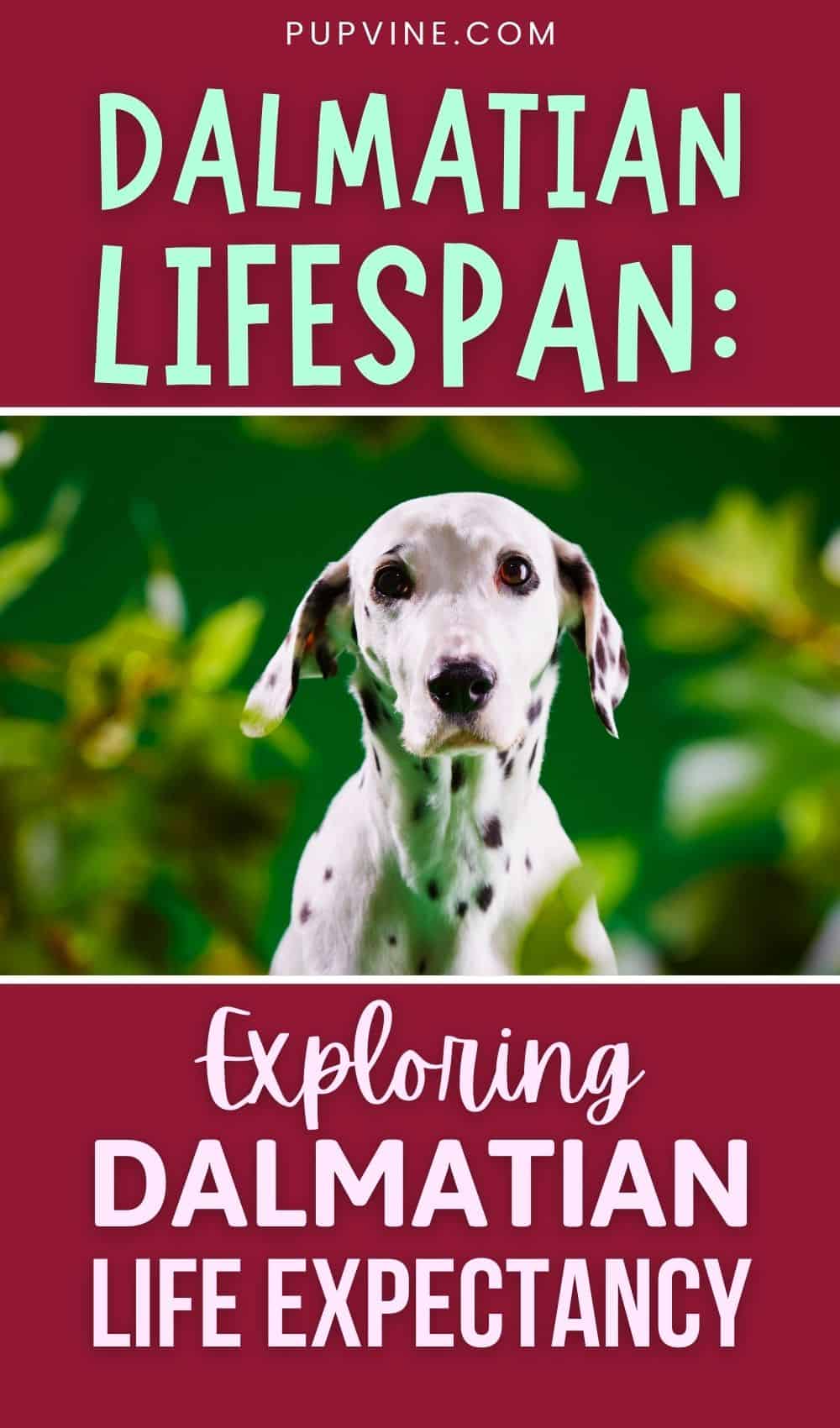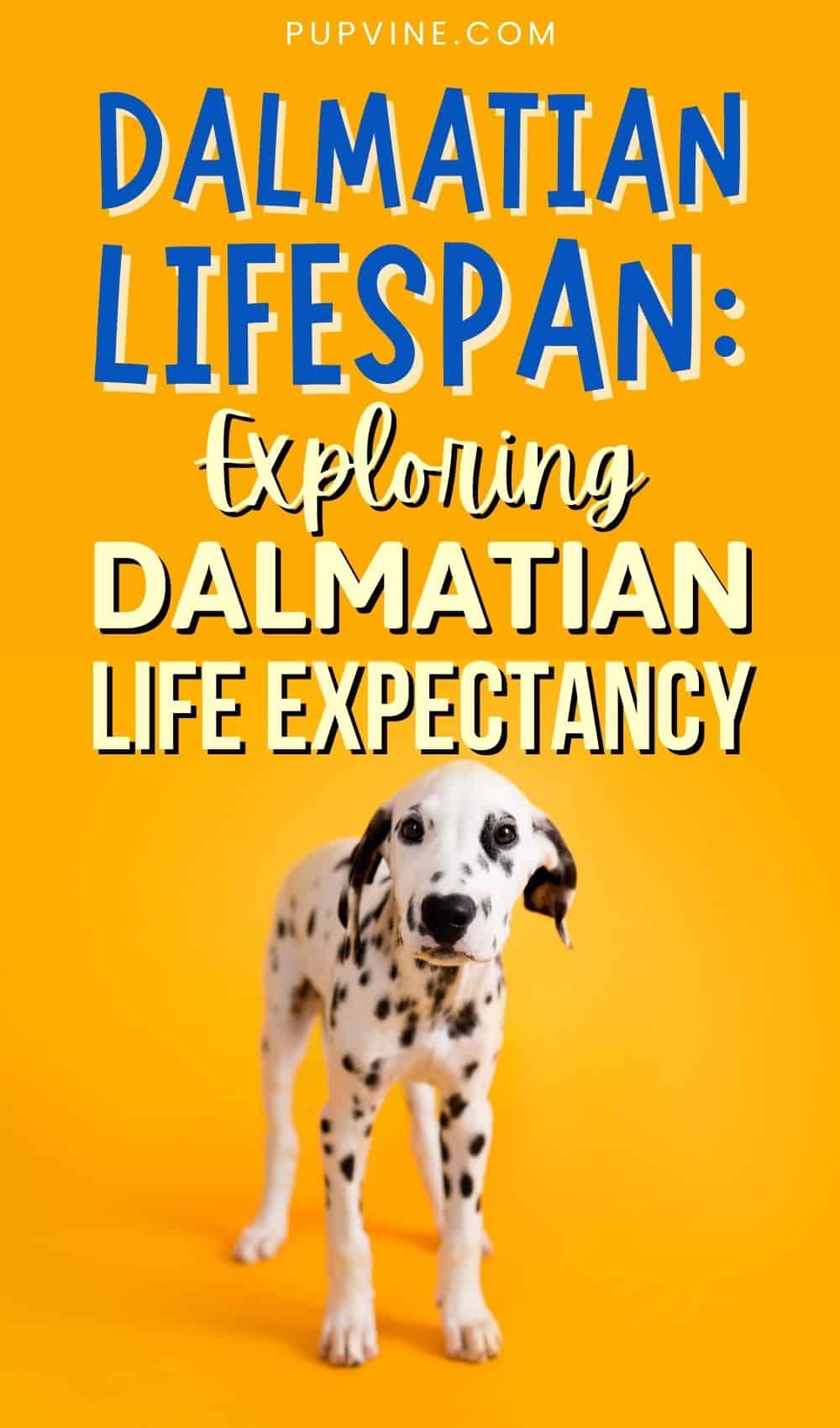Whenever we choose a dog, we accept that it isn’t going to be around forever, as dogs have a much shorter lifespan than us. We know that one day they will break our hearts. It’s just the way things are. But does that stop us from accepting these adorable pooches into our homes? Of course not! If anything, it makes us cherish them all the more.
Before taking any dog into your home, it’s always best to learn as much about them as possible. Their quality of life will be your responsibility, and it’s up to you to get it right and to do your very best to look after them.
In this article, we’re taking an in-depth look at the Dalmatian. As well as investigating the Dalmatian lifespan, we’ll be examining its history, health conditions, and character.
A Brief History Of The Dalmatian
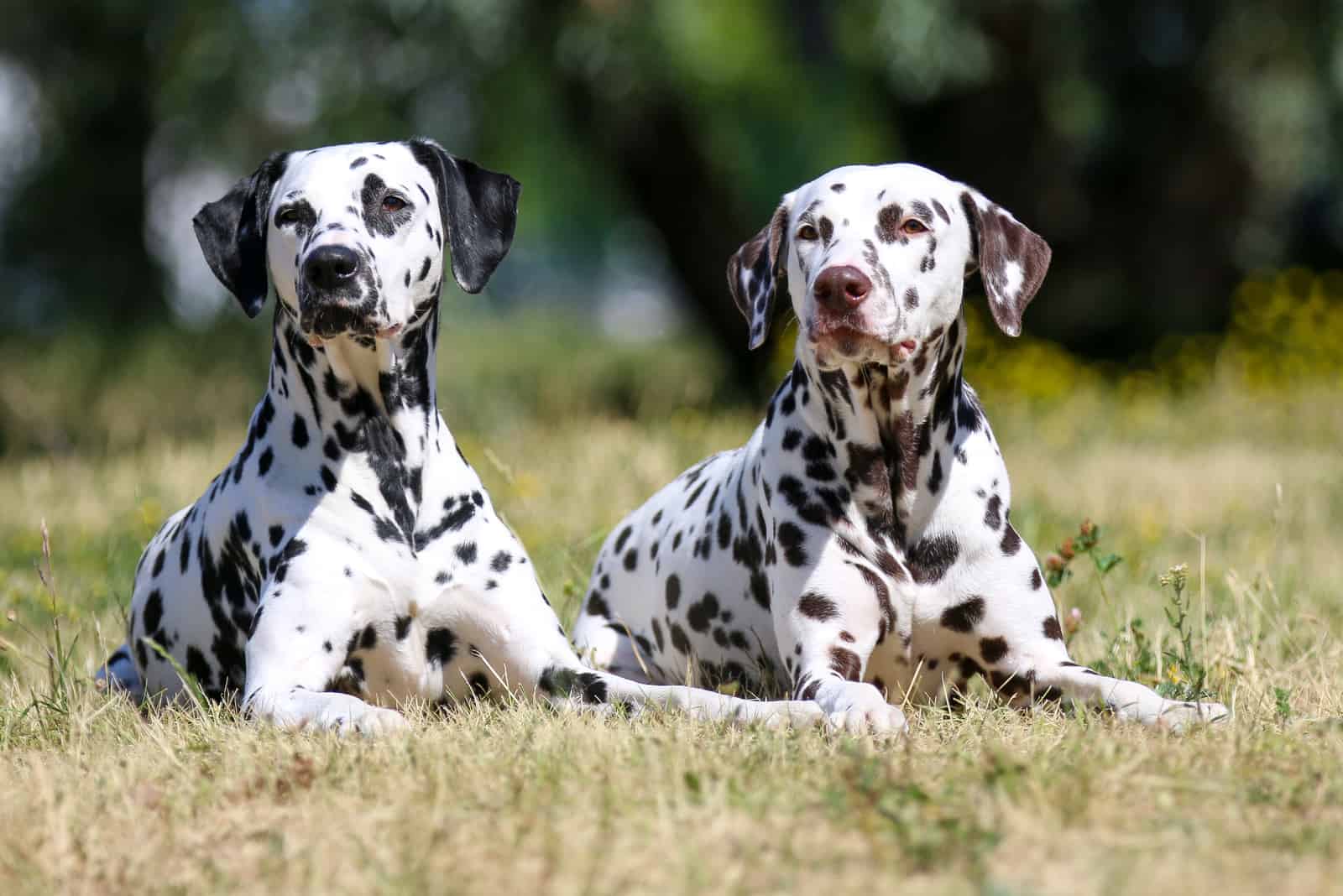
The Dalmatian is one of those instantly recognizable dog breeds, with its distinctive black and white spotted coat, happy face, and upward-curving tail that wags non-stop. Though we don’t see as many around as we might have done in the past, they are still a popular breed today in many parts of the world.
But where did it all start?
Well, as the name suggests, some people believe that they originated in a place called Dalmatia, a historical region of Croatia. The earliest mention of the breed is found in 1374, where the Bishop of Dakavo (a town in Slavonia) referred to them as Canis Dalmaticus, which means Dalmatian Dog.
It was described as a large hunting dog with a short white coat covered with round black spots in a random pattern. The breed was thought to have been produced by crossing spotted Great Danes with a type of pointer dog.
Although they were probably used for hunting, their usefulness extended well beyond this. When they were introduced to England in the 1800s, they were used as a status symbol by the wealthy, who would make them run alongside their carriages. This stemmed from a suggestion that the dogs had been used in the past to guard coaches traveling through the European countryside, where attacks from bandits or wild animals were commonplace.
Dogs with spotted coats were more popular then and were often seen guarding stables to prevent the theft of valuable horses. This eventually led to them being known as Spotted Coach Dogs.
Other enthusiasts of the breed added to the tale by suggesting that Dalmatians had also been used as dogs of war or that their origins lie elsewhere, such as in North Africa or Asia. A touch of romance was added by the notion that these spotty dogs were the constant companions of the nomadic Romani culture on their wanderings around Europe.
This last fact might have links to the breed’s popularity amongst another traveling fraternity, the circus, where Dalmatians became prized for their intelligence and athletic abilities that allowed them to be trained to perform tricks. They are still widely known as circus dogs to this day!
Their reputation as coach or carriage dogs evolved to spark a trend that has become firmly entrenched in American culture – the firehouse dog. From the early days where fire trucks were little more than horse-drawn carriages, the trusty Dalmatian was used as a guide, clearing a path through crowds on the way to the burning building and guarding the horses and equipment while the firefighters did their work.
They would also be a calming influence on the horses, who were often unsettled by the roar and crackle of the flames, and then they would act as a watchdog once the horses and fire carriage were safely back at the firehouse.
Even today, the loyal Dalmatian is a mascot in many American firehouses, and firefighters will often choose this loyal companion over other breeds. However, these days the dogs ride in the fire engines rather than run beside them!
Another link to their carriage dog label is that they were traditionally used by brewers as guard dogs, guarding the wagons as drivers made their deliveries. This is why the Anheuser-Busch company (owner of Budweiser brewery) often has a Dalmatian accompanying its iconic beer wagon.
The Dalmatian Breed
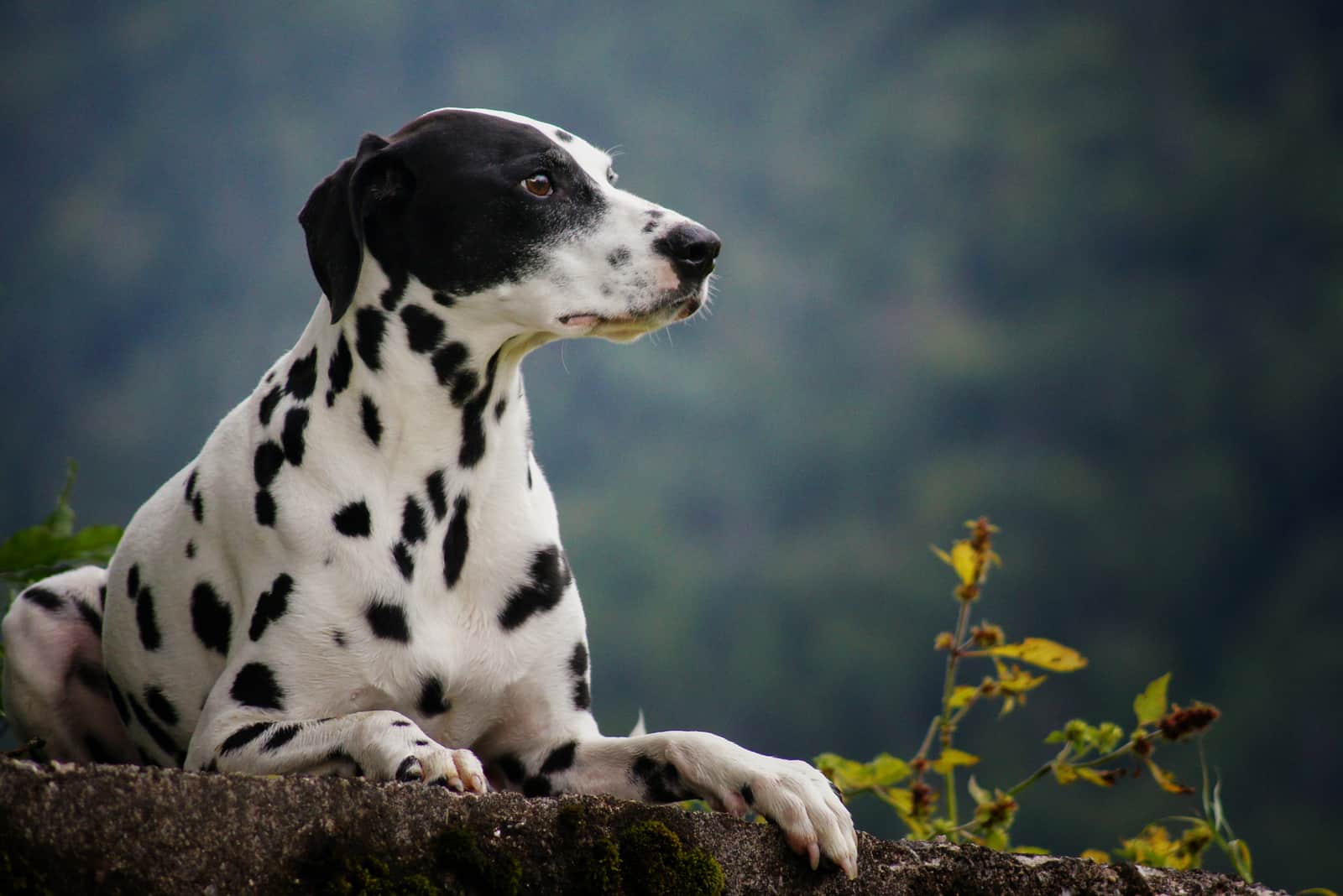
Pups are born completely white, gaining their spots after a couple of weeks. Adults are sleek and muscular, with a short, dense coat that is, unusually, heavy-shedding.
According to the Dalmatian growth chart, males measure approximately 60 cm (23.6 in) at the shoulder, with females being a touch smaller. Both will weigh between 25–35 kg (55–77 lbs).
They are white with black or liver-colored spots. Black-spotted dogs always have black noses, and liver-spotted dogs always have brown.
They’re not exactly large, but their boisterous nature can make them seem much bigger. These dogs aren’t suitable for small apartments or cramped accommodation!
The Dalmatian’s Character
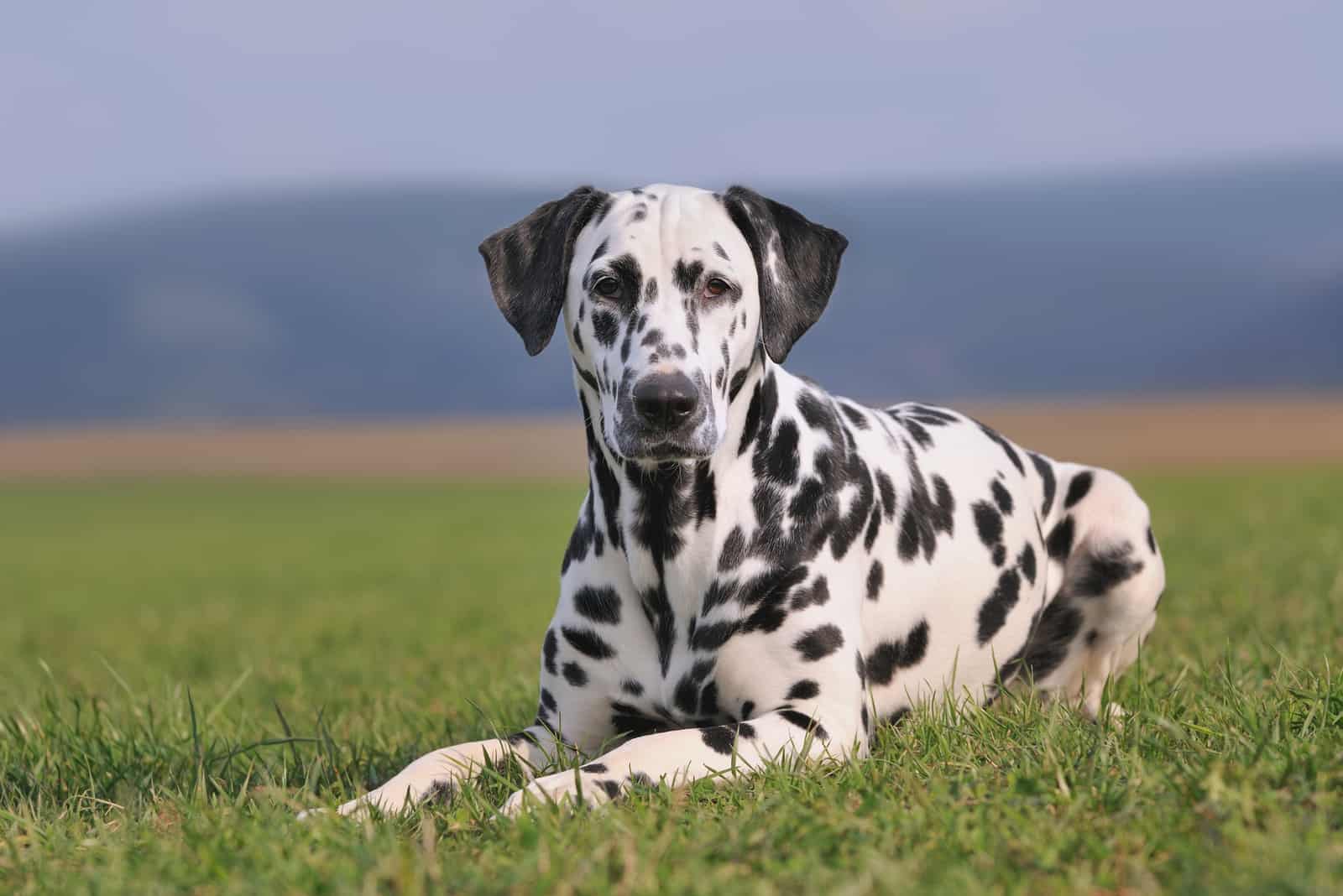
First and foremost, this is a highly energetic breed. This is probably the number one reason why so many people suddenly discovered the Dalmatian wasn’t for them as they just couldn’t cope with its energy level. The trouble is, the trend for Dals, following the popular movies featuring them, led to a surge in poorly-bred dogs as people tried to keep up with demand.
Not only did this introduce unhealthy dogs to the breed, but it also fuelled rumors that Dalmatians were a breed to avoid. People who were unwilling and unprepared to care for and train these dogs often left confused, scared, and aggressive Dalmatians for others to fix.
However, all it takes is a bit of effort, perseverance, and love, and you’ll have a loyal companion for life.
So, we know they are high-energy dogs, but they’re so much more than this: They are a playful, friendly, sensitive, intelligent, and loyal companion dog. They just want to be your best friend!
Of course, each dog has its own character, but most Dalmatians will make excellent guard dogs as well as a great family pet – as long as you are an active family.
This dog will need at least two hours of exercise each day. They are born to run! Their natural exuberance can be too much for some, and they need to be watched around small kids as they can be a bit ‘bouncy.’
If you start training your pup when it is young, you’ll find that they take to it well. They are seriously smart dogs, and they like nothing better than to make you happy. Use positive reinforcement, with plenty of praise and a few treats thrown in, and training will be a breeze.
This will go a long way to solving any behavioral problems when they are older, such as wariness or timidness around strangers or aggression towards other dogs.
The hunting instinct, or prey drive, is pretty high in this breed and might be stronger in some dogs than others. Training should be able to help here, too, but you’ll need to keep a firm hand and a close eye on them to keep them in check.
What Is The Lifespan Of A Dalmatian?
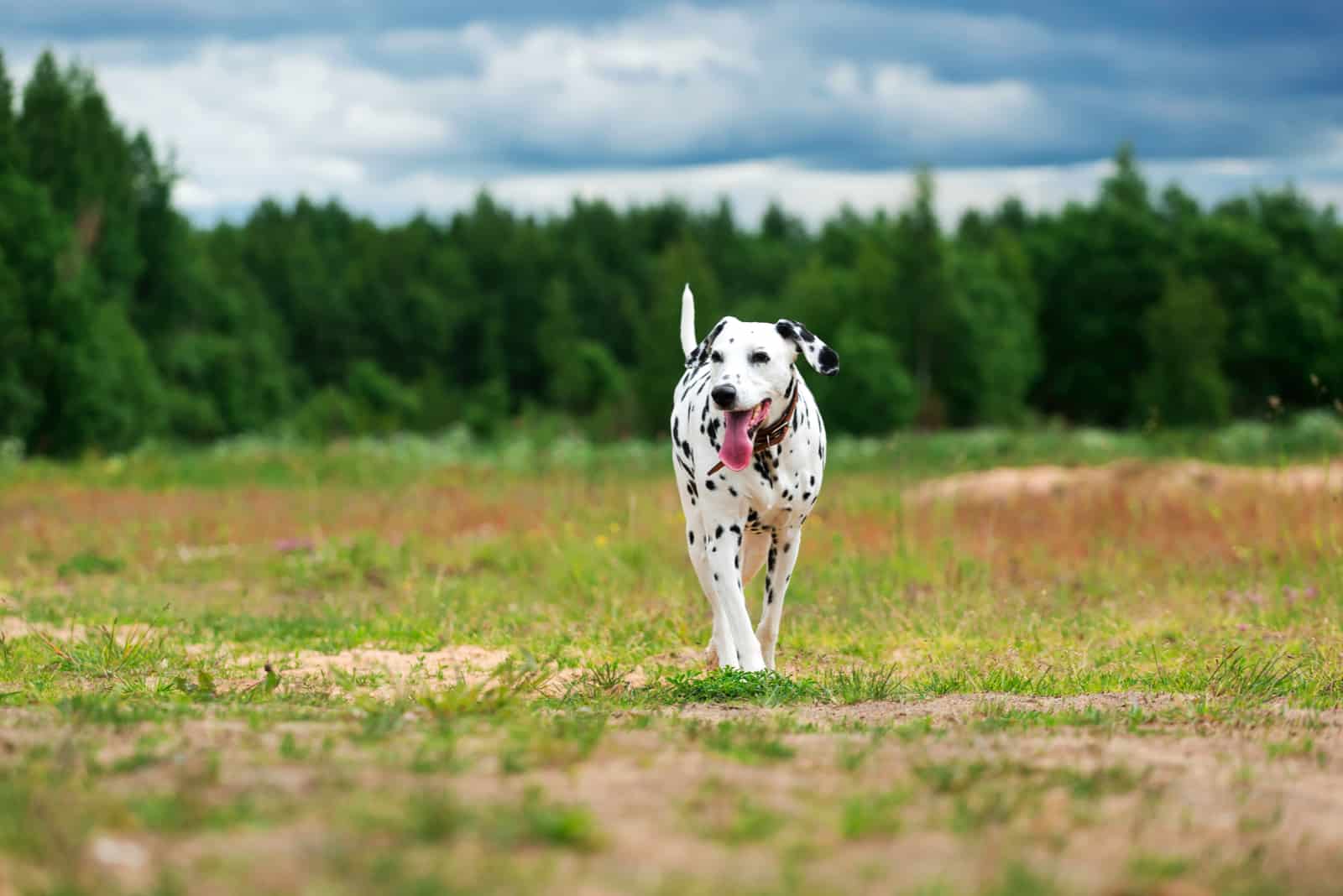
Now we get to the heart of our investigation: the Dalmatian lifespan.
The average lifespan of a Dalmatian dog varies between 10 and 13 years, although they can live between 15 or 16 years old. In truth, the answer depends on who you ask, as many studies have reached different conclusions and the statistics vary by country.
Also, a Dalmatian crossbreed, such as a Golden Retriever Dalmatian mix, might live longer or shorter than its purebred counterparts.
As medium-size dogs go, this isn’t too bad. And there is a chance that your Dalmatian will live beyond the average, especially if you give them the three things they need: a good diet, plenty of exercise, and proper healthcare.
Experts aren’t really sure why medium-to-large dogs generally have a shorter lifespan than small dogs. A Chihuahua, for instance, can reach twenty years, and Retrievers fall somewhere between eleven and twelve years, while a ‘giant’ dog, such as a Mastiff, might only make it as far as seven or eight years of age.
This is the reverse of what is normally observed in nature, where smaller animals have an accelerated metabolism and therefore have a much shorter lifespan. When you consider the comparison between the heartbeat of a gerbil and a giraffe, this makes sense.
One explanation is that selective breeding over the centuries has led to quick-growing breeds. As a result, they reach maturity very quickly, and their bodies age much faster.
As mentioned earlier, we can help extend their lives by only feeding them the best foods, keeping them fit and active, and getting regular health checks at the vet.
What Age Is The Oldest Dalmatian?
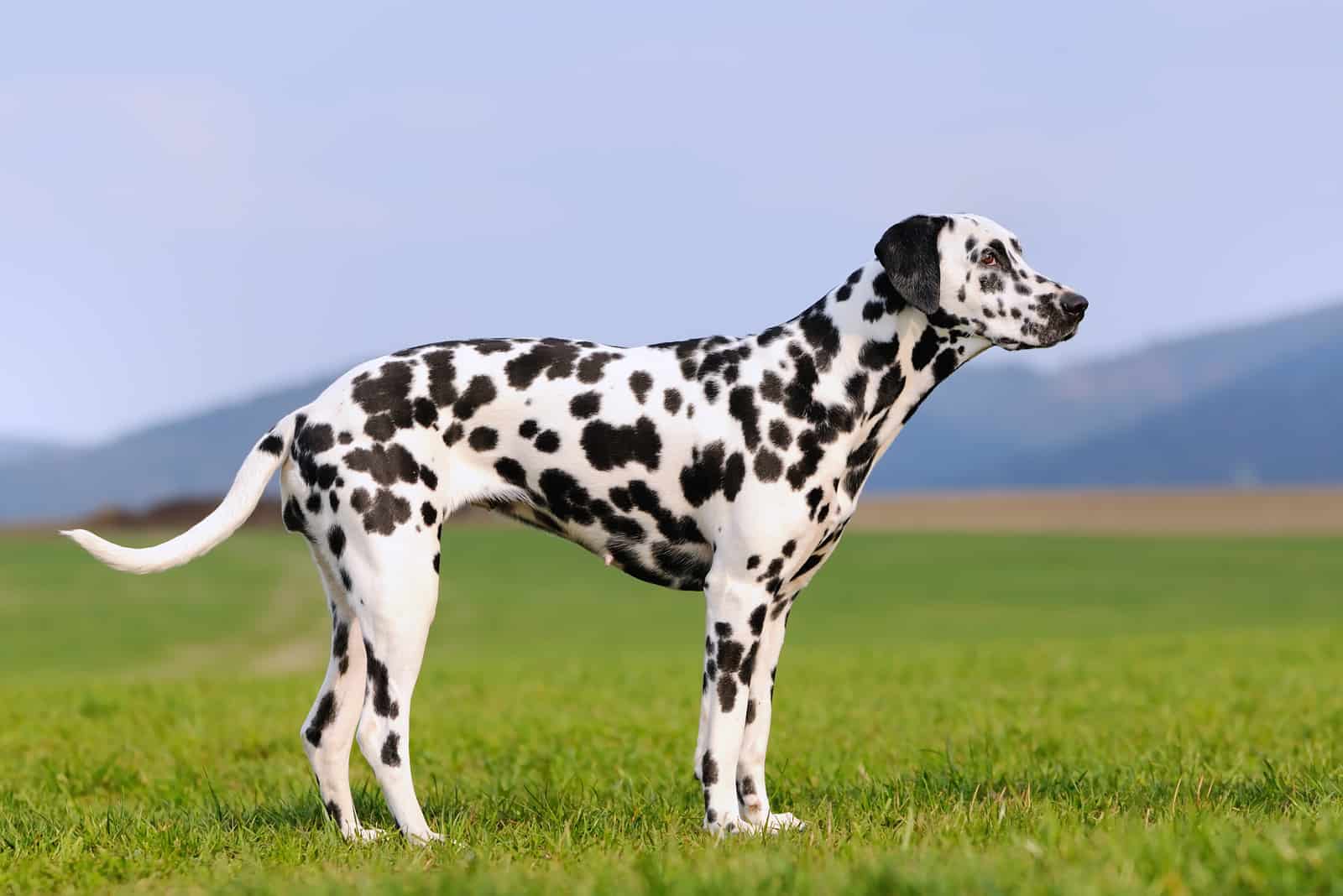
There are reports of Dalmatians living up to 17 years of age, though these are difficult to verify. However, an amazing story surfaced in March 2018 about a Dalmatian from Goose Creek, South Carolina, by the name of Scootie, who almost reached the remarkable age of 21. That’s about 114 in human years!
What makes this story even more fascinating is that Scootie was the runt of the litter, survived cancer halfway through his long life, and had a heart murmur to contend with.
It has to be said, though, that cases like this are rare. It also raises ethical questions, as Scootie was unable to walk for the last two years of his life, and his eyesight had failed by the end. Euthanizing any pet is a heart-wrenching decision to have to make, but their welfare and quality of life must always take precedence over any emotional attachment.
Do Dalmatians Have A Lot Of Health Problems?
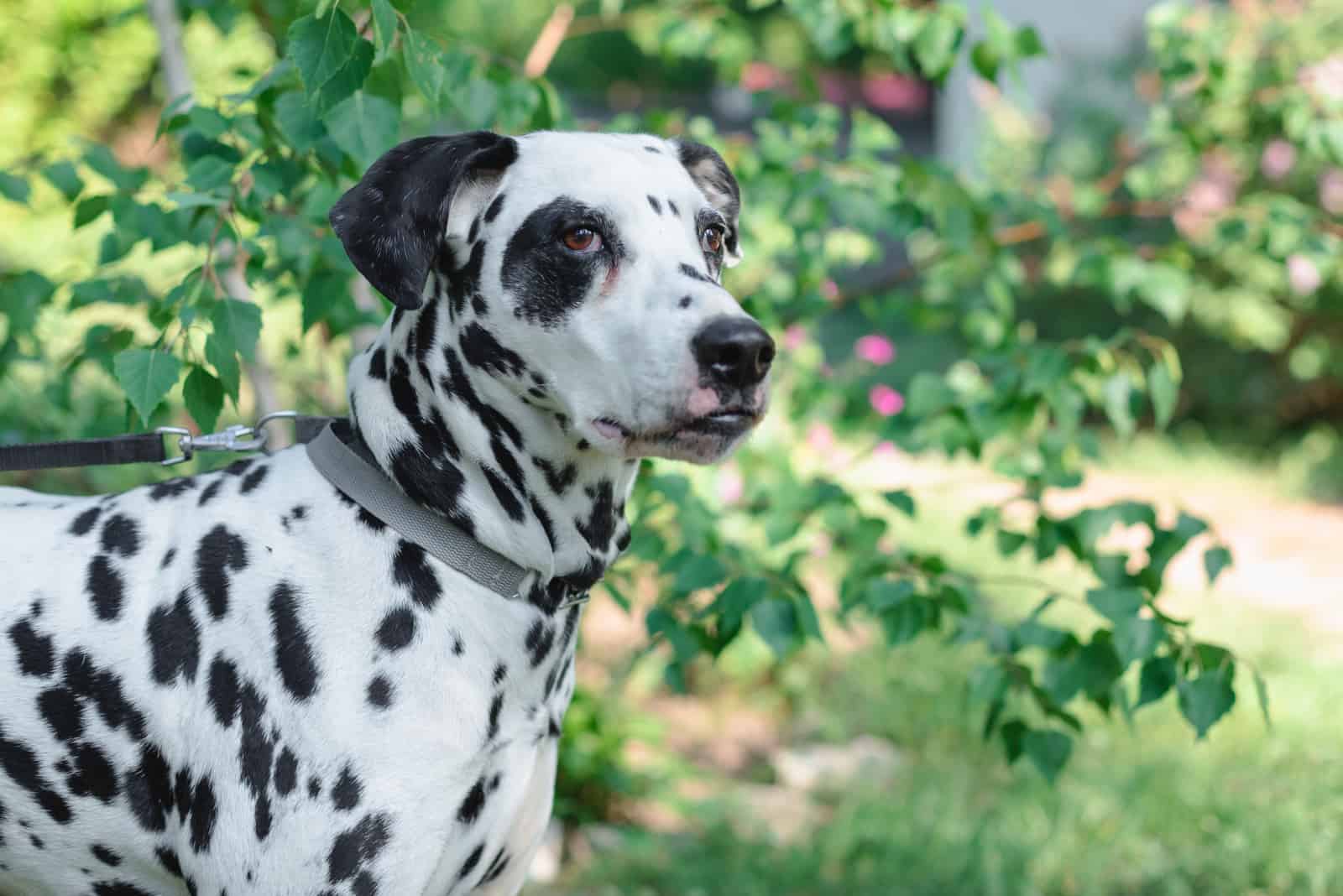
Every dog breed has its share of health issues, some more than others, and this is especially so with purebred dogs because they have a restricted gene pool. As with so many breeds, you’ll find that the Dal, as it is known, is described as ‘generally healthy.’
However, one thing that seems to plague this breed is deafness. Around 8% of Dalmatian puppies are born completely deaf, and up to 24% will be deaf in at least one ear.
This is an inherited condition connected with their spottiness! The genes that control the coat color and produce the spots that we know so well also cause a lack of mature melanocytes. These are essential for the ears to function properly, and without them, the dog will face hearing problems.
Reputable breeders use the BAER (brainstem auditory evoked response) test to check the pups for any signs of hearing loss.
Aside from deafness, here are some other health problems that may affect the Dalmatian:
• Hip dysplasia – a common problem, especially in large dogs, caused by a malformed hip joint. It can be extremely painful as the bones will scrape together. Surgery is the preferred treatment, with the whole joint being replaced with a plastic and metal one that will work smoothly.
• Urinary stones/bladder stones – due to a genetic defect, Dalmatians are unable to metabolize and excrete organic compounds called purines, found in a lot of foods, especially meat. Purines are broken down in four stages, including a step that converts uric acid into allantoin, which is excreted in the urine. Dalmatians are unable to perform this step, leading to the accumulation of uric acid in the bladder and urinary tract, which causes small, hard stones to form. Surgery is sometimes necessary, but veterinarians often prefer to allow the stones to dissolve using medication or pass naturally. Females can cope with this better due to having a wider urinary tract that allows the stones to pass more easily.
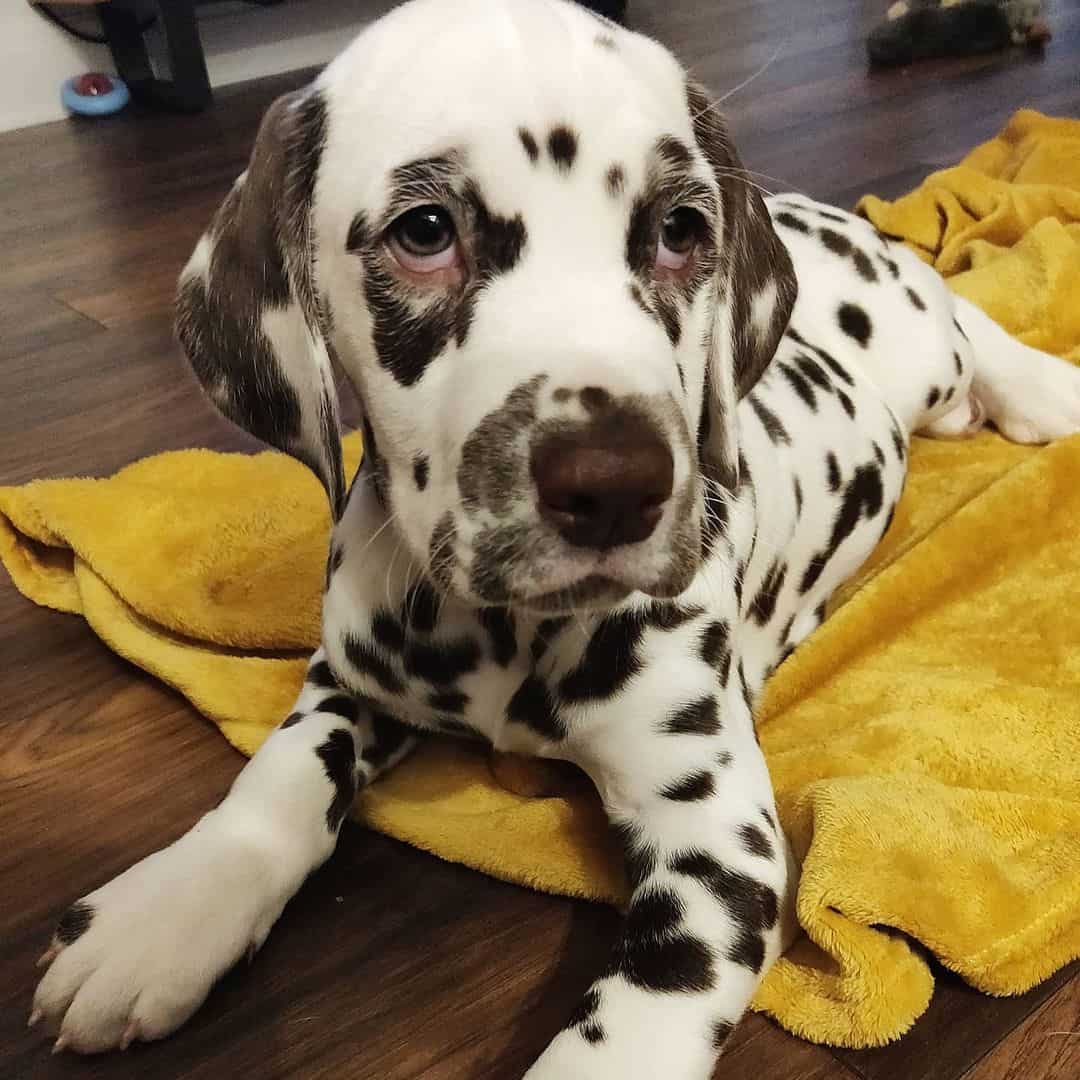
Photo from @fredandfreya
• Epilepsy – canine epilepsy has several causes, including trauma, organ failure, and exposure to toxins. However, the biggest cause is idiopathic epilepsy, but experts don’t really understand why it happens. Seizures with a known cause can be identified and treated accordingly, but idiopathic epilepsy has no cure. However, it can be managed with long-term medication.
• Allergies – Dalmatians are very sensitive to dust mites and pollen. Rather than sneezing, which is how humans naturally react, the allergens make the dog’s skin very itchy, known as atopy. This reaction is usually seen in the folds of skin, ears, feet, and belly. Treatments include special shampoos or ointments to reduce the itching.
None of these conditions sound particularly life-threatening, do they? However, seizures can be fatal if they are severe enough. And urinary stones can cause a complete blockage of the urethra.
When this happens, the urinary tract can rupture, spilling urine into the abdomen. Death can follow within days, if not hours, if the condition isn’t treated immediately.
Problems like these can lower the Dalmatian lifespan considerably.
Are Dalmatians A Dying Breed?
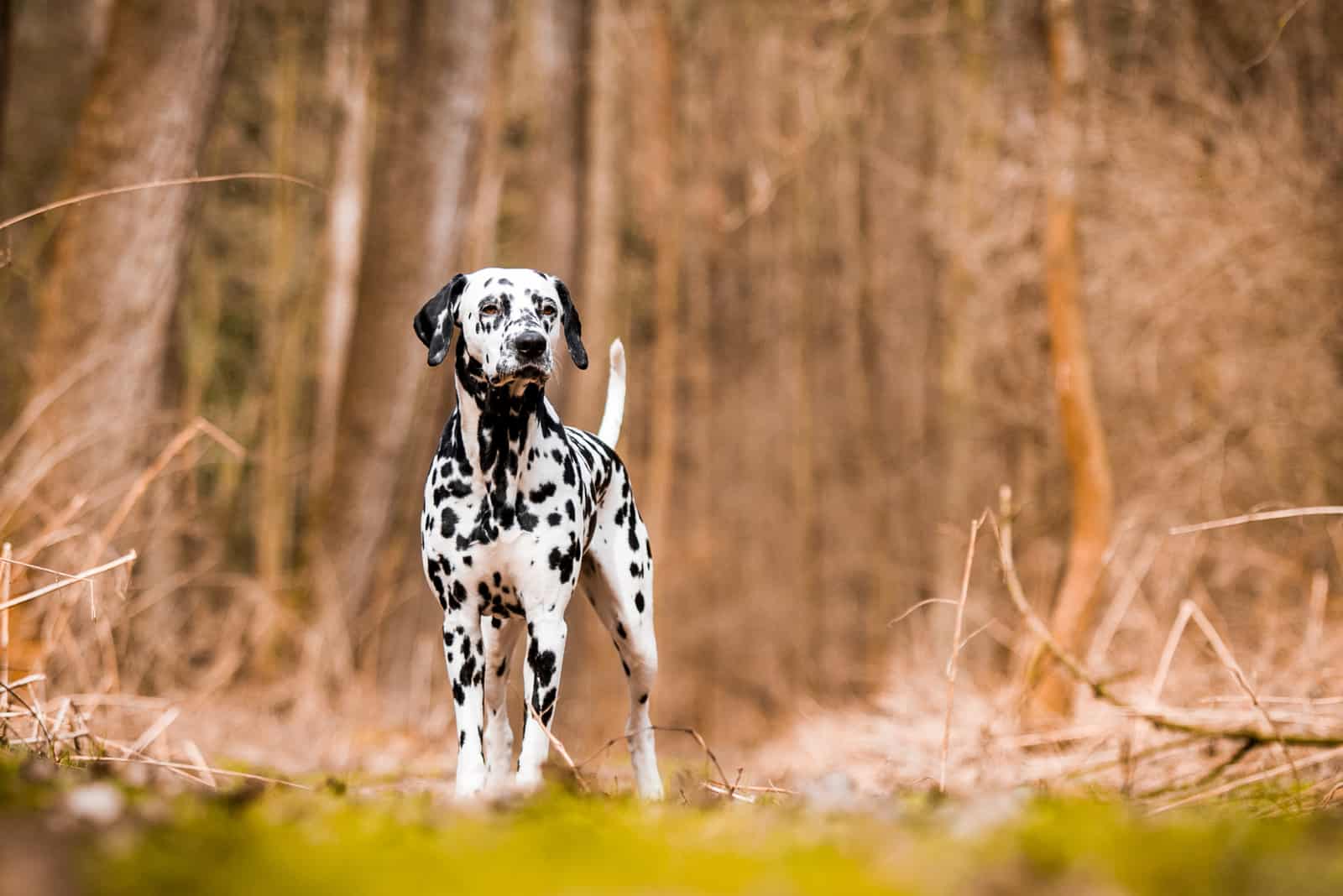
There is no doubt that you don’t see as many as you used to. Does this mean that they are dying as a breed? Well, not really, but their popularity has tended to surge and dip over the decades. One of the reasons people aren’t choosing Dalmatians is that there are so many new breeds on the scene, and the trend seems to be in favor of small dogs right now.
Also, we are measuring their popularity now against those times in the past where they received a massive boost from Disney.
Despite some arguments to the contrary that claim that the media, and Hollywood in particular, has little or no influence on the issue, the evidence is clear: When the general public sees a movie starring any animal that is presented as being cute or cuddly in any way, sales of those animals surge.
The Disney classic, 101 Dalmatians, was re-released in 1985 and 1991. During this time, the American Kennel Club (AKC) witnessed an increase in annual registrations from around 8,000 to almost 43,000 dogs.
By 1993, this trend had reversed just as dramatically, with Dalmatians becoming the breed with the sharpest decline in registrations in AKC history.
However, the biggest tragedy is that many of the people who bought Dalmatians did no research into the animals or breeds and were totally unprepared. They seemed surprised when their adorable Dalmatian puppy transformed into an adult dog with its own needs and requirements. Unable (or unwilling) to cope with the responsibility, they got rid of them.
To prove this wasn’t simply a coincidence, the same thing happened in 1996 when a live-action version of the movie was made. People flocked to buy Dalmatian pups, then discarded them when they realized that the dog was growing bigger or that it actually took some effort to look after. The Dalmatian lifespan wasn’t the issue here, simply that the dogs grew up.
The result was that record numbers of Dalmatians were dumped at rescue centers and shelters. Some places saw an increase of 300%, and one rescue center in Tampa Bay, Florida, saw a staggering 762% increase in Dalmatians dropped at its door.
The Dalmatian is far from the only victim of this type of behavior, but it has lent its name to the phenomenon: the 101 Dalmatian’s Syndrome.
Various organizations, such as the Dalmatian Club of America and the Humane Society, have met with Disney to try to combat this behavior. Now, you will usually see advice and warnings at the end of a movie featuring cuddly or cute animals.
So, no, the Dalmatian isn’t a dying breed, but because their popularity waned so dramatically, some breeders saw no value in breeding them anymore. They need a particular type of person who is willing to invest the time and effort, so they aren’t for everyone.
It isn’t all bad news, as many so-called breeders were basically puppy mills or people who had bought a couple of Dalmatians and were trying to make a fast buck. And if people aren’t buying the dogs, these unethical places will not make any money. The sad fact is, though, that they’ll probably move onto the next breed that is in vogue.
The messages here are: Don’t buy from puppy mills or backyard breeders, and don’t buy a pet just because you saw it in a movie!
The Final Word On The Dalmatian Lifespan
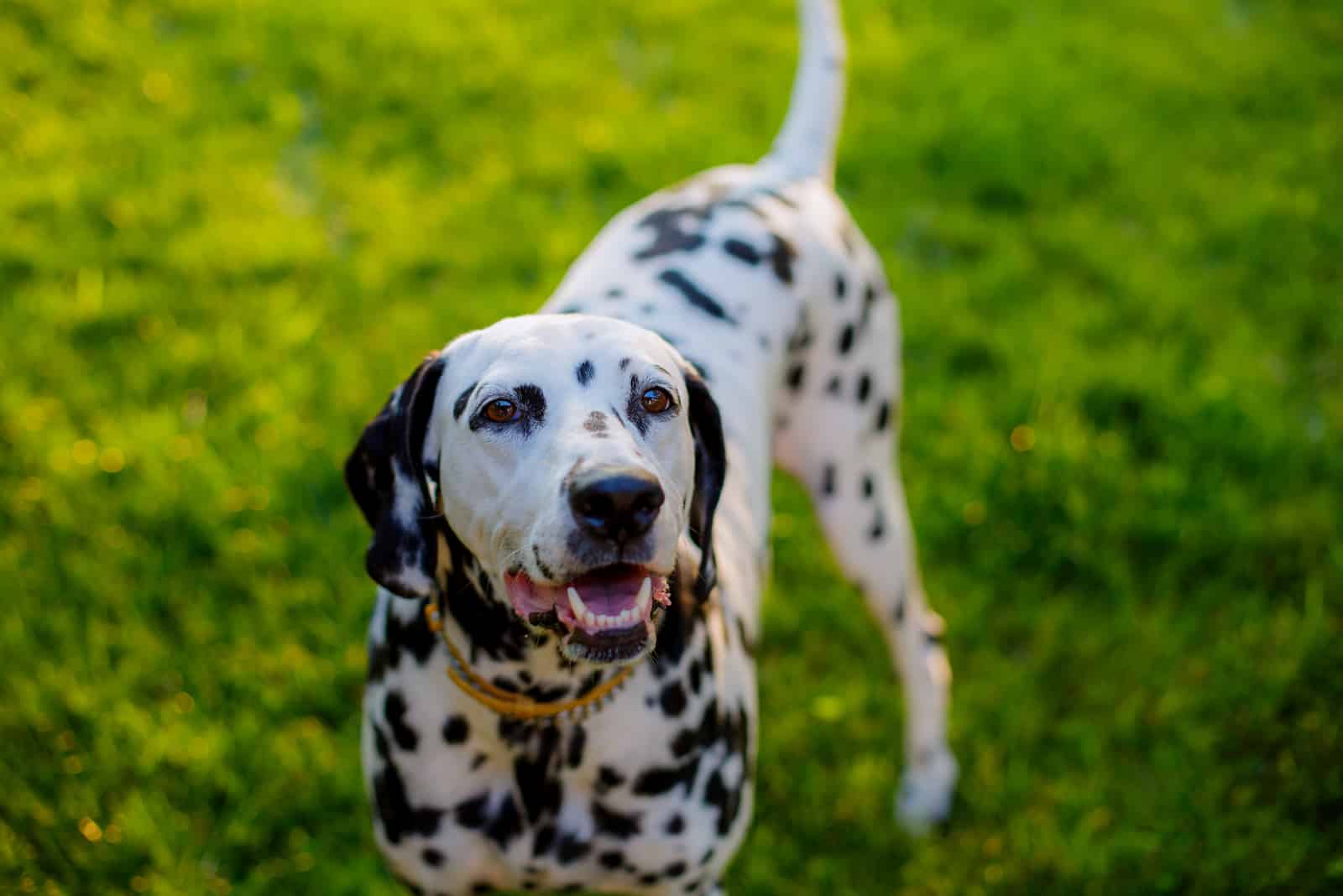
The Dalmatian breed deserves our help. They have a fascinating history, even if some of it is vague.
Through no fault of their own, they were thrust into the limelight to become stars of stage and screen, ushering in a short-lived surge in popularity. Ill-informed people unwisely rushed out to buy pups, only to reject them when they outgrew their cuteness.
Somehow, they earned a reputation for being ‘hard work,’ and while this is partly true, any dog requires effort on your part. They need care, training, love, and respect.
You will need to groom them (the Dalmatian needs regular brushing as they’re a heavy-shedder) and check their ears for infections. You’ll need to clip their toenails and clean their teeth. You must make sure they have plenty of exercise! And this is probably the key point about Dals.
Without adequate exercise, they will become bored, frustrated, and even aggressive and destructive, especially if left on their own for long periods. They will have excess energy that needs an outlet. It’s up to you to make sure that they expend that energy in the right way.
With the right training, this intelligent breed will be your companion, your best friend, your running/hiking buddy, and your watchdog. And if you treat them right, they’ll be around for a good fifteen years or more, so your actions play a big part in the Dalmatian lifespan!
It’s true – we don’t see as many Dalmatians as we used to. This doesn’t mean they aren’t popular, but just that other breeds are more popular at the moment.
We don’t need another Dalmatians movie to boost popularity. We just need people to realize that these energetic, friendly, loyal pooches are worth the effort.
Dalmatians aren’t a dying breed, as such, but without anyone willing to invest in them, there is a real chance that we will lose them for good.
Read Next: Top 6 Best Dalmatian Breeders In The UK (2022)
